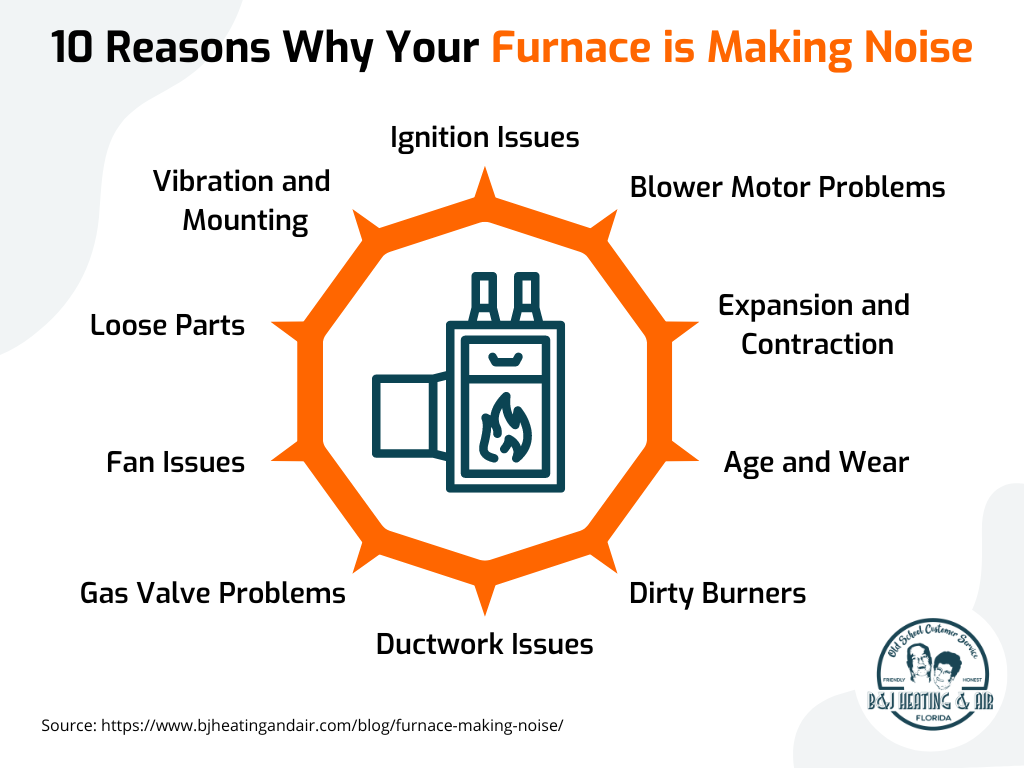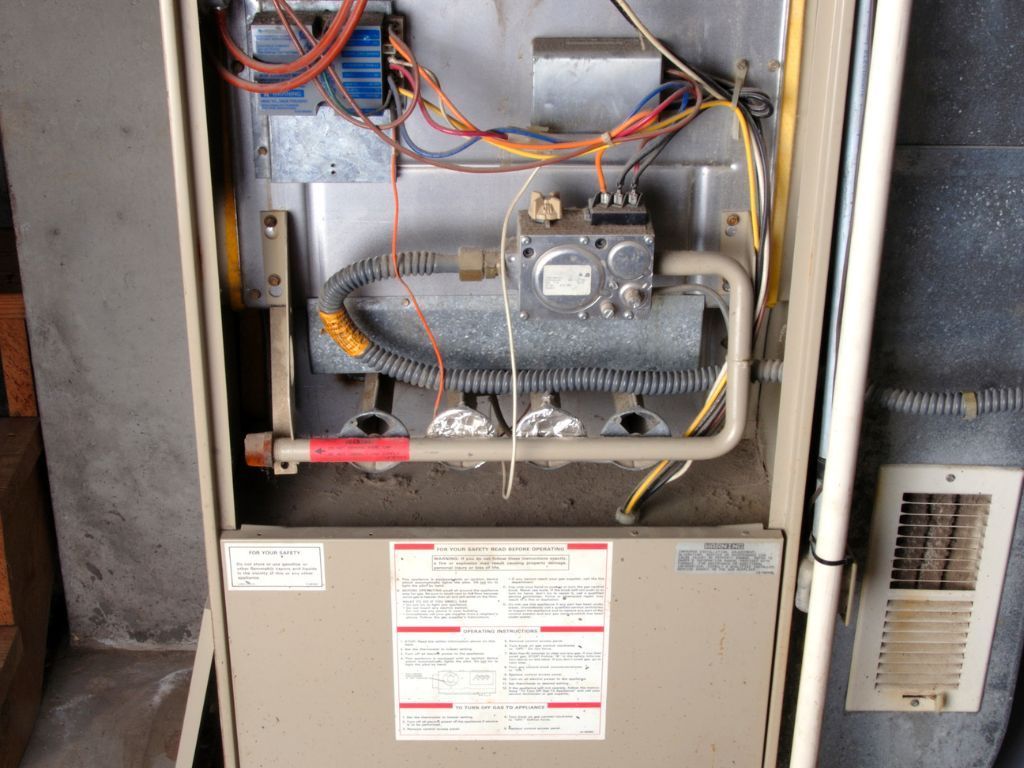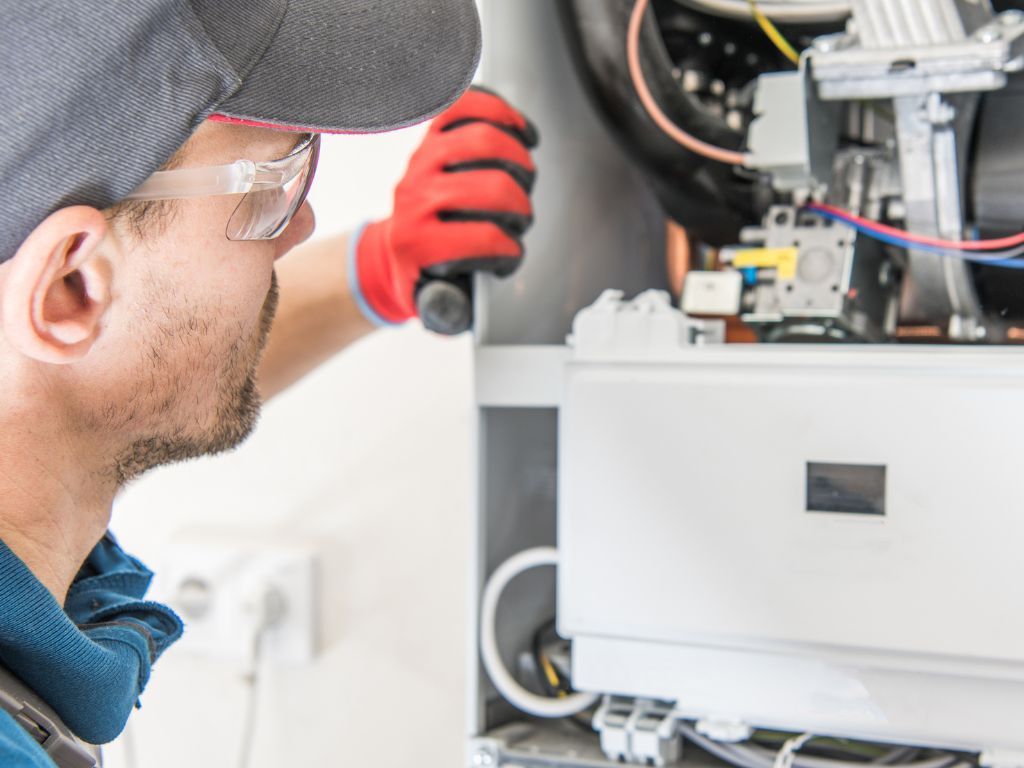The Top 10 Causes of Furnace Noise & How to Fix Them
Our winters might not be all that frigid in Florida, but most of us still have heating systems that we use every now and then. If you’re like most homeowners in the Sunshine State, you likely use a furnace to warm your house during the coldest months.
Furnaces should operate fairly quietly – but sometimes, the reassuring hum turns into an unsettling symphony of clanks, bangs, and squeaks.
Hearing unexplained noises can be disconcerting. There are many different causes behind your furnace making noises—it can either be a sign of trouble or just an indicator that something needs to be looked at.
So, how can you tell which is causing the problem, and what can you do to fix it? In this article, we’ll take a look at some of the most common causes of furnace noise as well as how to address each one.
1. Ignition Issues
One reason for these unexpected sounds stems from ignition issues, specifically related to the combustion process. An electronic ignition system or pilot light provides an initial spark, igniting the gas-air mixture. However, if the furnace fails to ignite, the buildup of gas can lead to a sudden series of clicks or bangs.
Troubleshooting can get you to the root of the problem. Ensure your burners are clean and free from debris that might mess with ignition. Check for any loose connections, particularly around the ignition system. Dirty air filters can also cause clogs from dust and dirt, causing the ignition to fail.
Replacing filters is a simple fix, but if it doesn’t solve the problem, consider calling a professional technician. They will conduct a thorough inspection and potentially replace any faulty ignition components.
2. Blower Motor Problems
The blower motor is responsible for circulating warm air throughout your home. A persistent hum, ear-piercing squeal, or rattle might all be indicators of trouble in this area.
There are a few different reasons why your motor could be having issues. Worn-out bearings can create friction and contribute to the racket. Additionally, if the blower wheel is misaligned or has debris caught in it, it can generate rattling noises as it spins.
Address blower motor problems by inspecting and maintaining the motor, as well as cleaning and aligning the blower wheel. If the noise persists, the motor’s bearings may be too worn and need replacement.
3. Loose Parts
A furnace making noises like rattling and squeaking might indicate the presence of loose parts within your system.
These sounds arise as components vibrate against each other or against the furnace’s frame. To fix this issue, you’ll need to take a systematic approach.
Begin by turning off your furnace and allowing it to cool. Then, carefully inspect each part of the system, from panels and screws to ductwork and fan blades. Tighten any loose screws, bolts, or fasteners that you come across. Examine the blower motor, burners, and any other movable components for signs of instability.
4. Age and Wear
An aged furnace will likely show some wear and tear, which can also manifest as clanks and squeaks. These sounds often arise from parts becoming loose or worn over time. Moreover, exposure to moisture and temperature fluctuations can cause rust and corrosion to develop on metal components.
To mitigate the effects of aging on heaters, we recommend performing regular maintenance and timely repairs. Routine inspections by HVAC professionals will help you identify and address issues before they worsen.
If your furnace has seen better days, it might be wise to consider a replacement. An aging furnace is less efficient and may cause you to rack up expensive energy bills. Upgrading to a newer, more advanced model can offer quieter operation, savings, and better overall performance.
5. Dirty Burners
Clogged or dirty burners are another possible culprit behind a furnace making noises. Loud sounds can emerge as the burners struggle to ignite and burn gas effectively.
To address this issue, clean and inspect your burners on a regular basis, removing debris, dust, and grime that accumulate over time.
Think dirty burners might be your issue? Given the potential safety risks associated with gas appliances, you should always contact a professional technician. They have the expertise to get the job done safely and effectively.
6. Ductwork Issues
Air moves throughout the ducts. When there’s a restriction in airflow caused by leaks, gaps, or obstructions within the ducts, it can cause a range of loud noises.
Whistling when air is forced through small gaps. Banging sounds can also occur if the ducts are not properly secured, causing them to move when the air pressure changes. Additionally, improperly insulated ducts make the noises more audible throughout your home.
A comprehensive look at the duct system can help you to pinpoint the problem. This should involve checking for leaks, securing loose connections, and ensuring proper insulation. If you run into more problems, contact a trusted HVAC professional.
7. Gas Valve Problems
Gas valve problems lead to specific types of noises – most commonly hissing or clicking.
When the gas valve doesn’t open or close properly, gas can begin to leak from the valve. Hissing may be an indicator of gas flowing through a partially open valve, while clicking might occur as the valve attempts to open but fails to do so.
Gas valve malfunctions can lead to serious safety concerns, so immediate attention is critical if you suspect this is the case. Take precautionary measures such as turning off the gas supply and contacting a professional technician. Gas-related issues should never be addressed without the help of a trained expert.
8. Vibration and Mounting
When the furnace vibrates against its surroundings, it can lead to many disrupting noises. These rumbling and vibrating sounds often come from improper furnace mounting or installation.
Proper installation goes beyond just functionality—it impacts the acoustics as well. Securely mounting your furnace and using appropriate vibration-dampening materials can make your heater run smoothly.
However, this can be a complex fix. Contacting a trusted technician is the best way to ensure everything is done by the book.
9. Expansion and Contraction
The natural expansion and contraction of furnace components can cause distinctive metallic popping or ticking sounds. These noises happen as the components of your furnace heat up during operation and then cool down when the system cycles off.
While the expansion and contraction of your furnace is generally harmless, the noises it creates can be bothersome.
There are a few strategies that can lessen the noise. Insulating around the furnace and its components can help dampen the sound. You can also adjust the placement of components to reduce the friction between parts as they expand and contract.
If neither of these solutions fix the problem, consult a professional HVAC technician.
10. Fan Issues
The furnace fan, responsible for distributing warm air, can also become a source of disruption.
Accumulated dust and debris on fan blades can create scraping noises, while misaligned or damaged blades might lead to clicking sounds. What’s more, worn-out bearings or lack of lubrication can result in a persistent whirring noise.
To address these problems, start by turning off the furnace and inspecting the fan assembly for foreign objects and visible damage. Clean the blades carefully and ensure they’re correctly aligned. If necessary, lubricate the fan’s bearings according to the manufacturer’s recommendations.
Struggling to Silence Your Noisy Furnace? Hire a Florida HVAC Expert
A furnace making noises is an unsettling issue that many homeowners dread. With so many possible factors at play, troubleshooting is necessary to find out what’s going on beneath the surface.
Are you having furnace issues and don’t know where to start? Have you tried to fix the problem, but to no avail?
The team at B&J Heating and Air Conditioning has you covered. Servicing Largo and nearby cities in Pinellas County, Hillsborough County, and the Upper Manatee and Lower Pasco areas, we get to the root of furnace problems and fix them promptly at an affordable rate.
To schedule your appointment, call 727-295-3051 or contact us online.

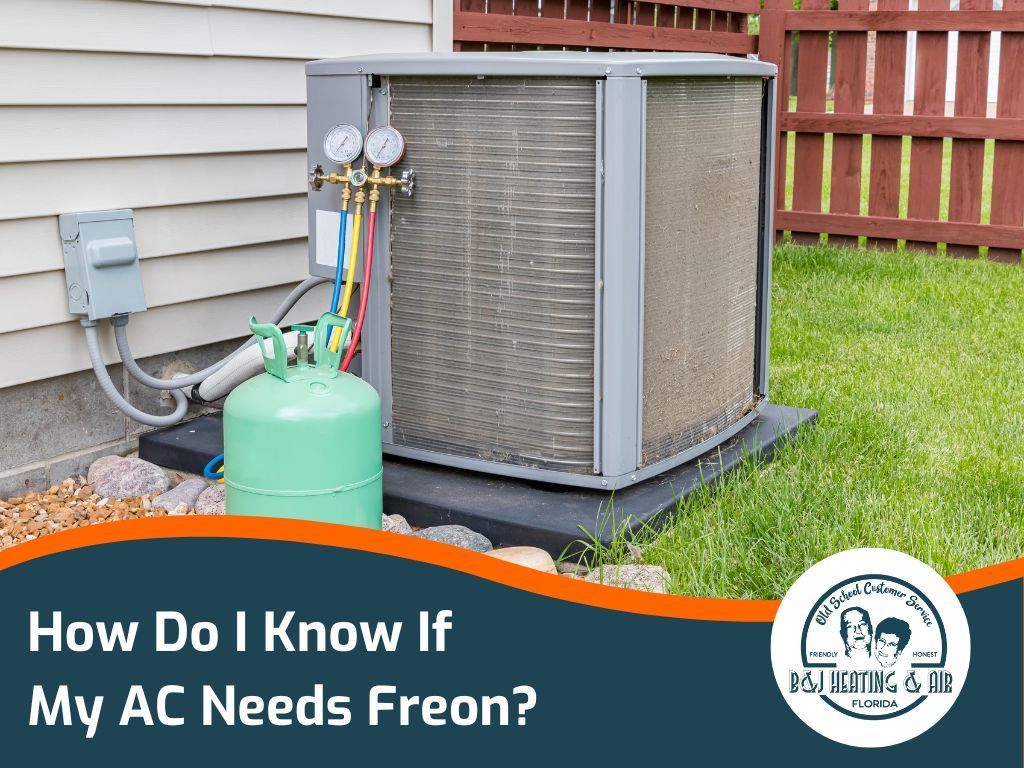

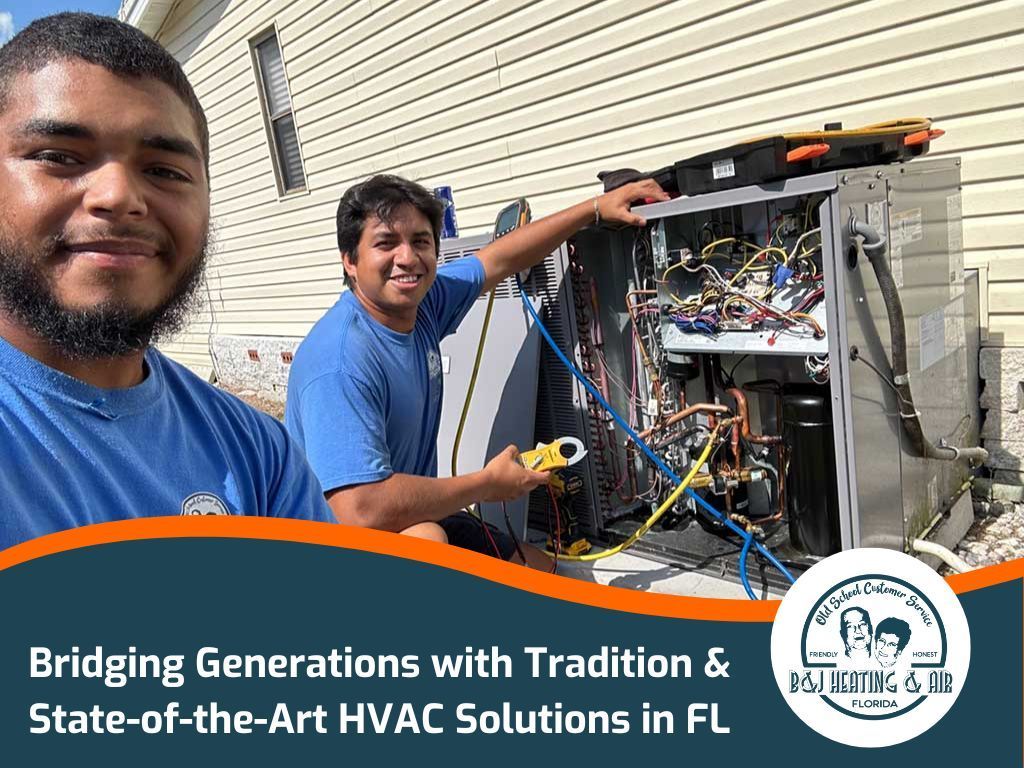


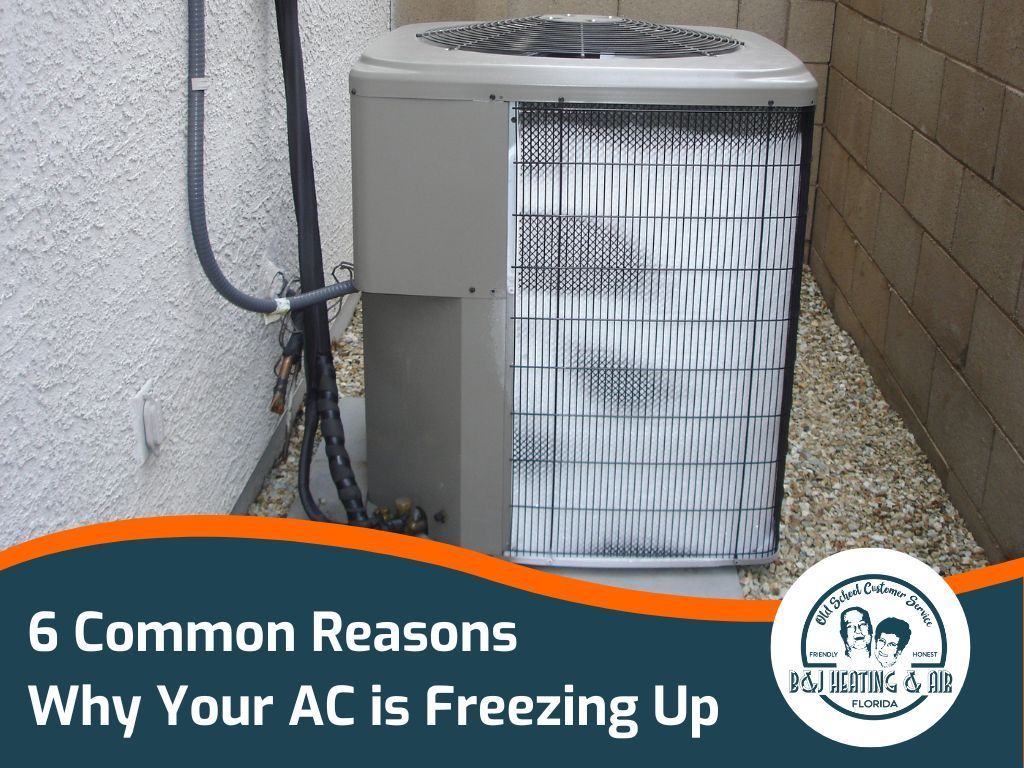
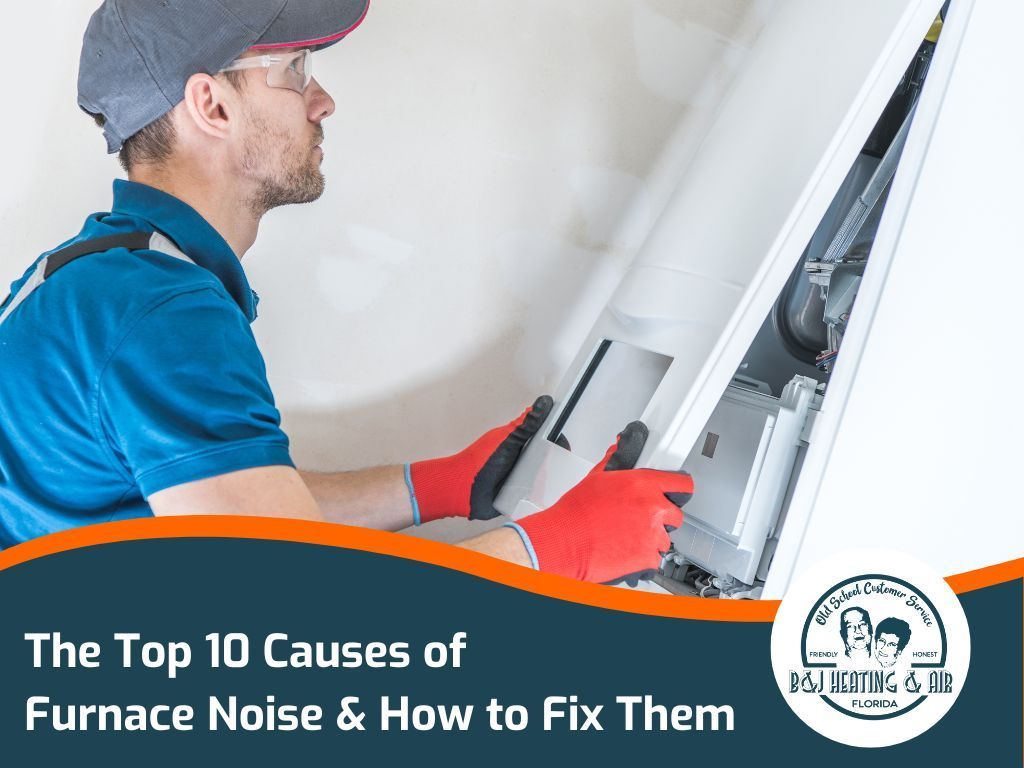
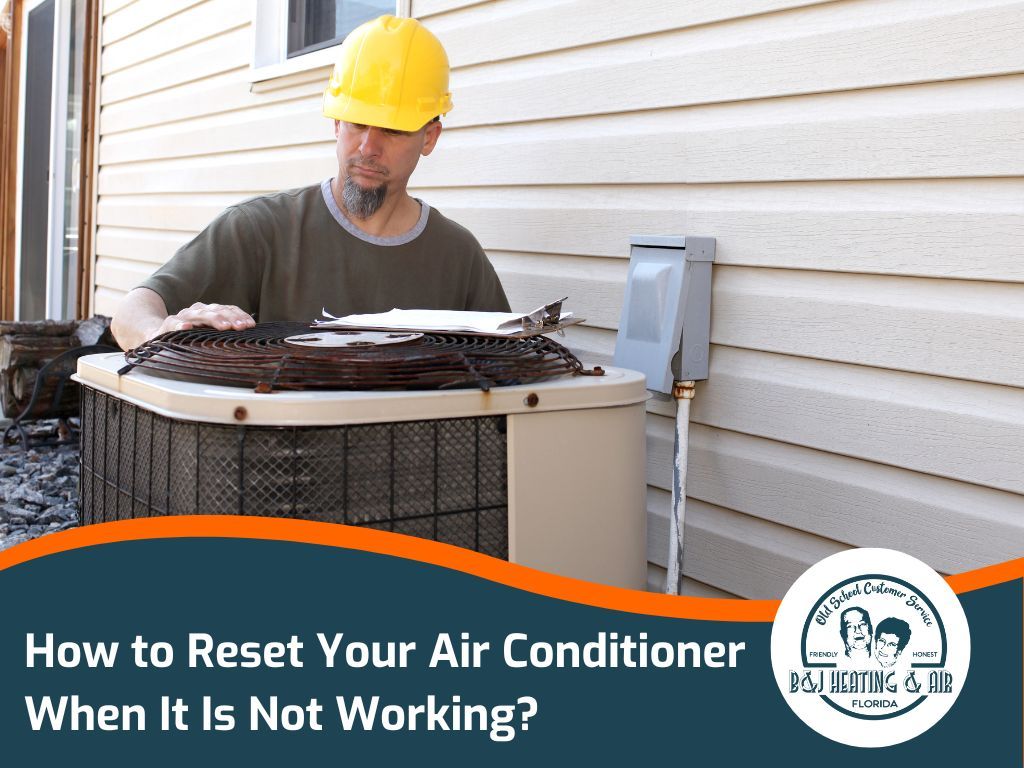
Quick Links
Services
Connect With Us
Mon - Fri: 7:30 AM - 5:00 PM
Sat- Sun Closed
License #: CAC1819389

